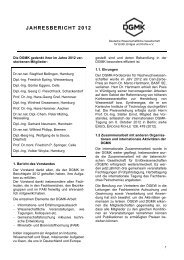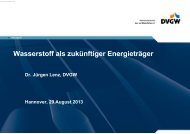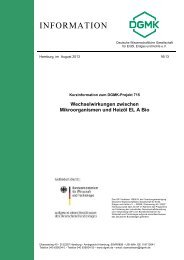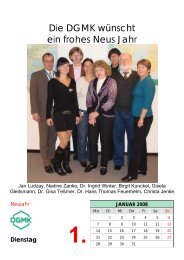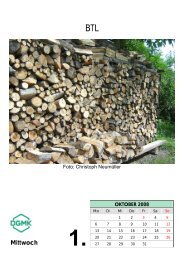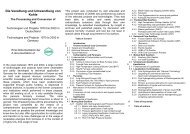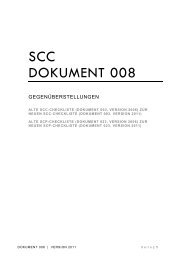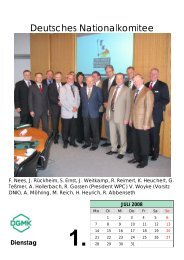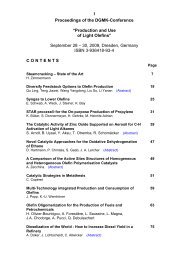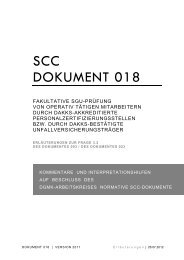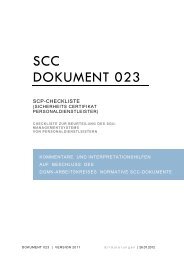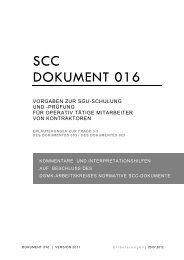Oxidative Desulfurization in - DGMK
Oxidative Desulfurization in - DGMK
Oxidative Desulfurization in - DGMK
Create successful ePaper yourself
Turn your PDF publications into a flip-book with our unique Google optimized e-Paper software.
<strong>DGMK</strong>-Conference “Oxidation and Functionalization:<br />
Classical and Alternative Routes and Sources“, Milan, 2005<br />
<strong>Oxidative</strong> <strong>Desulfurization</strong> <strong>in</strong> ULSD strategies<br />
Daniele Mol<strong>in</strong>ari, EniTecnologie S.p.A., daniele.mol<strong>in</strong>ari@enitecnologie.eni.it; Fax:<br />
+390252036354; Franco Baldiraghi, EniTecnologie S.p.A., franco.baldiraghi@euron.eni.it;<br />
Fax: +390252056612; Christopher Gosl<strong>in</strong>g, UOP LLC, chris.gosl<strong>in</strong>g@uop.com; Fax +1-847-<br />
391-2253; Ronald Gatan, UOP LLC, ron.gatan@uop.com; Fax:+1-847-391-2253<br />
Fuels regulations cont<strong>in</strong>ue to tighten worldwide <strong>in</strong> response to the need for cleaner air.<br />
Ref<strong>in</strong>ers will meet the Ultra-Low Sulfur Diesel (ULSD) regulations at a significant cost. In<br />
most cases, either a new high pressure hydrotreat<strong>in</strong>g unit or a major revamp of low/moderate<br />
pressure hydrotreat<strong>in</strong>g unit is required. In this scenario, alternative desulfurization routes<br />
become attractive. Eni S.p.A and UOP LLC have jo<strong>in</strong>tly developed a new oxidative<br />
desulfurization process as a cost effective solution for ULSD production.<br />
The key feature of the oxidative desulfurization process is the complementary chemistry to<br />
hydrodesulfurization. In fact, the most refractory compounds to hydrodesulfurize are the<br />
dibenzothiophenes which, on the contrary, show the highest oxidation rate <strong>in</strong> the oxidative<br />
desulfurization. <strong>Oxidative</strong> desulfurization is a good fit as a f<strong>in</strong>ish<strong>in</strong>g process downstream of<br />
an exist<strong>in</strong>g hydrodesulfurization unit (HDS) produc<strong>in</strong>g 300-500 wppm S.<br />
There are several oxidative desulfurization technologies available. A general process consists<br />
of three sections: a peroxide supply section, a sulfone generation section and a sulfone<br />
separation section. The first section comprises all the peroxide storage and handl<strong>in</strong>g facilities.<br />
In the second stage the hydrotreated diesel is mixed with the oxidant and the mixture<br />
contacted with an oxidation catalyst active for oxidation of sulfur compounds . The oxidation<br />
reaction causes physical-chemical properties of the sulfur compounds to significantly change.<br />
Tak<strong>in</strong>g advantage of this change, it is simple <strong>in</strong> the f<strong>in</strong>al step of the process to separate<br />
oxidation products from the diesel stream by us<strong>in</strong>g either solvent extraction or adsorption.<br />
In the traditional route a purchased hydroperoxide is used as a source of oxygen for sulfur<br />
oxidation. The high cost of either H2O2 or organic hydroperoxide make economics comparison<br />
with traditional hydrodesulfurization process unfavorable. ENI S.p.A. and UOP LLC<br />
have developed a new oxidative desulfurization process <strong>in</strong> which the hydroperoxide is produced<br />
<strong>in</strong>-situ to reduce ULSD production costs. The process scheme for the UOP/ENI <strong>Oxidative</strong><br />
<strong>Desulfurization</strong> Process is shown <strong>in</strong> Figure 1. In this process, the first step is an oxidation<br />
reactor <strong>in</strong> which a suitable hydrocarbon ref<strong>in</strong>ery stream (HCBN) is mixed with atmospheric<br />
air to produce hydroperoxide.<br />
Figure 1. UOP/Eni <strong>Oxidative</strong> <strong>Desulfurization</strong> Process Scheme<br />
HCBN<br />
HCBN<br />
Air<br />
Air<br />
Oxidant<br />
Section<br />
Sulfone<br />
Formation<br />
Section<br />
Hydrotreated<br />
Hydrotreated<br />
Diesel<br />
Diesel<br />
300-500 300-500 300 500 ppm ppm S<br />
S<br />
Sulfone<br />
Separation<br />
Recovered<br />
Recovered<br />
Sulfones<br />
Sulfones<br />
ULSD<br />
ULSD<br />
The hydroperoxide rich<br />
stream is mixed with hydrotreated<br />
diesel to prepare<br />
the feed stream for<br />
the sulfur oxidation section.<br />
In the second stage, a<br />
proprietary oxidation catalyst<br />
oxidizes sulfur compounds<br />
at low pressure<br />
(P
<strong>DGMK</strong>-Conference “Oxidation and Functionalization:<br />
Classical and Alternative Routes and Sources“, Milan, 2005<br />
sorption are effective. However, extraction is more expensive from both the capital and the<br />
operat<strong>in</strong>g cost po<strong>in</strong>t of view.<br />
Separation of all oxidized compounds results <strong>in</strong> a diesel yield loss. Hence, the “upgrade” of<br />
this oxidized hydrocarbon stream affects the process economics. This stream can be blended<br />
<strong>in</strong>to the heat<strong>in</strong>g oil pool or treated <strong>in</strong> either a cok<strong>in</strong>g or hydrocrack<strong>in</strong>g unit to recover valuable<br />
products.<br />
The advantages of the oxidative desulfurization process can be summarized as follows:<br />
- does not use hydrogen to produce ULSD<br />
- mild operat<strong>in</strong>g conditions<br />
- complementary chemistry to hydrodesulfurization<br />
- use conventional reaction and separation ref<strong>in</strong>ery equipments<br />
- flexibility to process cracked feedstocks



